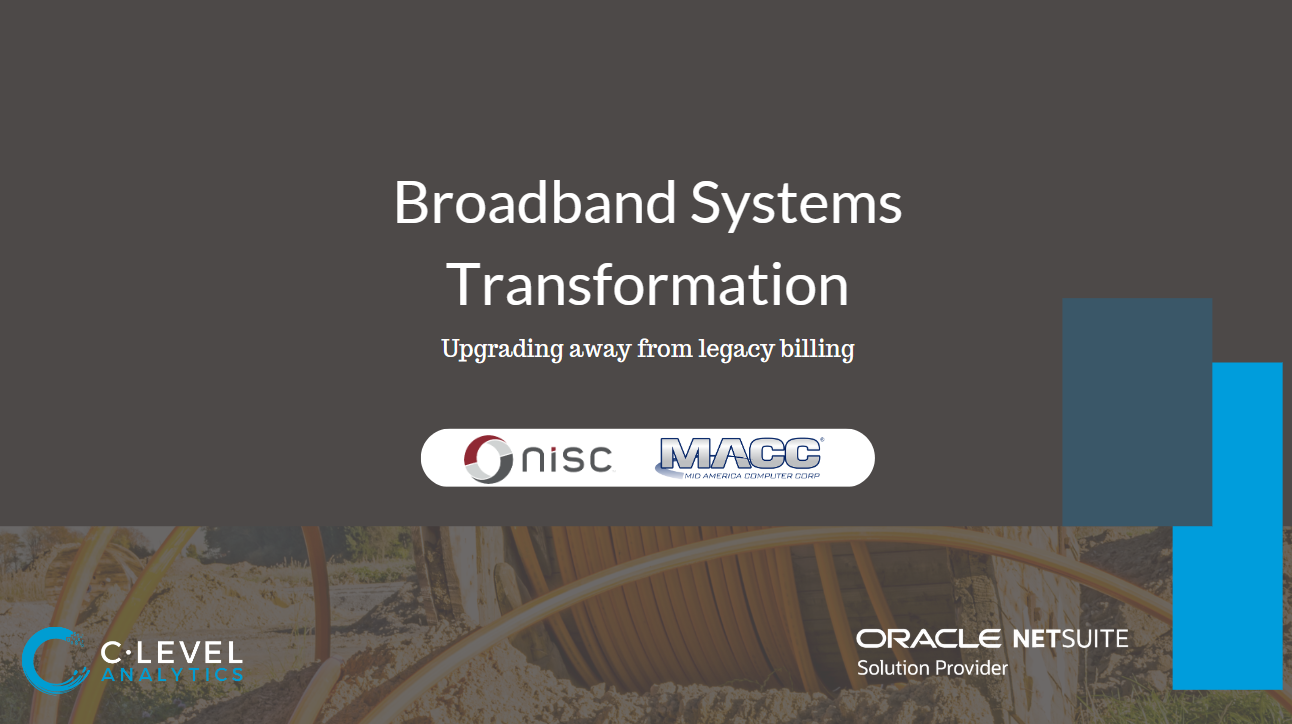Broadband Systems Transformation: Upgrading from Legacy BSS/OSS
The old world of monolithic BSS/OSS billing systems attempting to "do it all" are over. Modern BSS/OSS players are starting to emerge as the future....

The phrase "Hakuna Matata" means "no worries," and you might recognize it from Disney's "The Lion King" from a couple of decades ago. This succulently summarizes greenfield broadband organizations today. While not perfect, their system's situation is more straightforward. As a result, they can make choices that will either scale for the future or not. If you missed part 1 of this blog series, check it out here.

From a systems perspective, all revenue typically centers around the BSS/OSS system, commonly known as "the billing system." Greenfield organizations are starting in a period where these systems are modernizing, and new competitors are entering the field all the time, it seems. This is a good thing. The industry has been forced to deal with a handful of vendors for decades, and they have perhaps gotten a little too comfortable. Generally speaking, modern application systems, including BSS/OSS, are often much more innovative. These modern systems are cleaner and more focused on specific functions rather than trying to do too much. Most greenfield broadband companies are focused on fiber or are at least less focused on legacy services. To top it off, they aren't constrained, at least mentally, by sunk costs related to legacy systems and legacy business processes.
Modern systems are also almost always less costly and faster to implement, particularly for greenfield organizations. These organizations don't usually have to worry about data conversion from legacy systems which is often the highest cost and risk factor. Because of cloud-based technologies, these systems are often up and running, ready for implementation much faster.
Ten years ago, integration was more difficult and expensive. However, at least with modern application systems, we are in a place where integration is easy and cost-effective. Moreover, integration opens up best-of-breed approaches that weren't feasible or wise in the past.
Finally, these organizations almost always train staff and build business processes from scratch without "untraining" employees on existing systems and processes. Transitioning from legacy to modern systems can be a shock when the legacy application (and employees) have been around for decades. Add it to the pile of things that don't have to be considered!
As you can see, most of the picture is bright, but the one area these organizations need help with is testing. Unfortunately, it's hard to muster or even have the right resources to test new systems while they still perform their jobs. As a result, all teams are building everything up all at once. The two saving graces are the availability of 3rd parties from the industry to assist specifically with testing and the fact that implementing modern systems is easier in the first place. The worst place you can skimp when starting up is testing. Of all the steps in an implementation, there is nothing more important.

The old world of monolithic BSS/OSS billing systems attempting to "do it all" are over. Modern BSS/OSS players are starting to emerge as the future....

still hungry, but the complexity hurts Established broadband organizations have more complex considerations for systems and business processes...

"Much has changed for telecom service organizations in recent times. With the focus more narrowly defined on providing faster and more reliable...